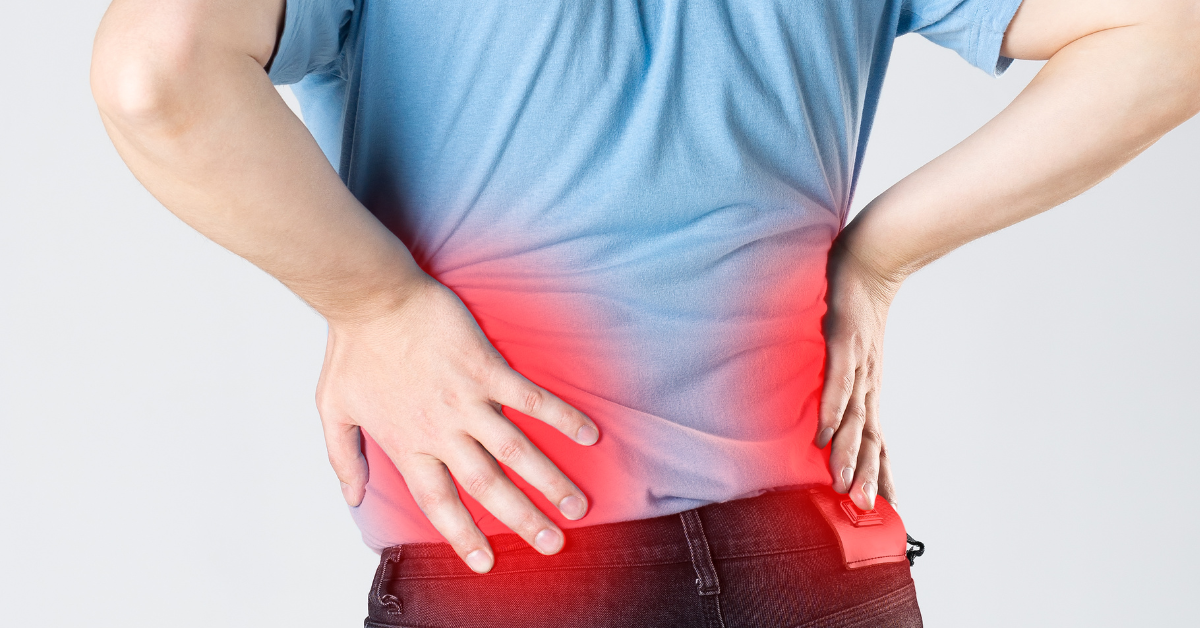Introduction
Sciatica, a condition characterized by radiating pain along the sciatic nerve, can drastically impair one’s quality of life, hindering daily activities and causing immense discomfort. While modern medicine offers various treatments, many people are turning to Ayurvedic treatment for sciatica, as it has shown promising results. Ayurveda provides comprehensive sciatica treatment through natural remedies, lifestyle modifications, and therapeutic techniques. In this blog, let’s learn about these Ayurveda therapies andhome treatment for sciatica leg pain.

Understanding Sciatica Through Ayurveda
In Ayurveda, sciatica is considered Gridhrasi, indicating the gait of a person suffering from sciatic pain similar to that of a vulture. It arises chiefly due to Vata Dosha imbalance associated with other Doshas presenting with varied symptoms. Ayurveda sciatica remedy helps relieve pain by addressing the root cause of the pain and bringing the body back into equilibrium. Sciatica is a condition where the pain starts in the buttock region and runs down the leg sometimes with numbness, weakness, or tingling. Ayurveda treatment for sciatica balances energies against inflammation and nerve compression. Snehana, Swedana, Vasti, and Agni Karma are the treatments used to relieve pain and treat the cause of sciatica.
Ayurvedic Conceptual Framework (Gridhrasi, Vata, and Asthi)
In Ayurveda, nerve pain or neuropathy is often linked to a condition called Gridhrasi, which resembles modern-day sciatica or nerve-related pain in the legs. The root cause lies in the imbalance of Vata dosha, the bio-energy responsible for movement, nerve impulses, and circulation throughout the body.
When Vata dosha becomes aggravated due to poor diet, excessive stress, lack of sleep, or exposure to cold, it starts affecting the Asthi (bone) and Majja (nerve/marrow) dhatus. These tissues are deeply connected, as Asthi supports the body’s structure while Majja carries nerve impulses. When they weaken or lose nourishment, pain, tingling, numbness, or burning sensations begin to appear in the limbs.
Gridhrasi, as described in Ayurvedic texts, manifests with classic symptoms like:
- Shooting or radiating pain from the lower back to the legs
- Stiffness or heaviness in the affected limb
- Tingling or numbness due to obstruction of Vata flow
- Difficulty in walking or sitting comfortably
To correct this imbalance, Ayurveda emphasizes:
- Balancing Vata through warm, unctuous foods and regular oil massages (Abhyanga)
- Nourishing Asthi and Majja dhatus using ghee, milk, and herbs like Ashwagandha, Shatavari, and Bala
- Detoxifying therapies like Panchakarma (especially Basti and Snehana) to eliminate aggravated Vata and restore nerve health
In short, Ayurveda views neuropathy not just as nerve damage but as a deeper systemic imbalance where Vata needs grounding and nourishment, and Asthi-Majja dhatus need strength and regeneration. This holistic view helps address both pain and the underlying cause, supporting long-term nerve recovery.
- Snehana (Oleation)
It is usage of medicated oils and fats to treat all Vata-related diseases like sciatica. This involves nourishing all the tissues by pacifying the aggravated Vata Dosha.
External oleation (Abhyanga) – the systematic massage is done with warm medicated oil to remove the pain in sciatic nerves.
Key Benefits
– Reduce inflammation around the sciatic nerve and improved nutrition of tissues.
– Relaxes tense and spasmodic muscles along the sciatic nerve pathway
– Reduces muscle guarding and improves flexibility
– Clinical Studies state that approximately 60% pain reduction occurs over the treatment period of 4 Weeks.
Internal oleation (Senehapana) – uses prescribed ghee or oils for oral ingestion under the supervision of the practitioner to nourish the tissues and pacify the aggravation of Vata Dosha that constitutes the main cause of sciatic pain.
Key Benefits
– Eliminates aggravation of the Vata Dosha, and improves the digestive fire.
– Minimizes inflammation throughout the body, relieves chronic pain, and helps to heal tissues.
– Nourishes nerve tissues.
- Swedana (Sudation)
Swedana is a therapeutic sweating procedure that follows Snehana. It helps eliminate toxins and reduces stiffness caused by Vata and Kapha imbalances.
Key Benefits
– Nadi Swedana: Localized steam treatment for targeted relief.
– Pinda Swedana: Using medicinal boluses for deep tissue effects.
– Avagaha Swedana: Medicinal bath therapy.
– Improves circulation and promotes healing.
– Research indicates that combined Snehana-Swedana therapy results in a 70% decrease in pain scores.
- Vamana (Emesis)
Is the controlled therapeutic action of emesis specifically directed to Vata-Kaphaja Gridhrasi (sciatica)
Key Benefits
– Helps in balancing Kapha dosha
– Improves metabolic functionalities
– Most applicable in cases that tend to be Kapha-dominated
– Requires careful selection of patients and preparation
- Virechana (Purgation)
Virechana indicates therapeutic purgation for bringing out toxins from the body and improving health in general.
Key Benefits
-Cleanses the digestive system
-Reduces systemic inflammation
-Studies indicate a pain reduction of 65% when combined with other treatments
-Requires specific preparation and post-procedure follow-up
- Vasti (Enema)
Vasti is considered one of the most effective treatments for sciatica in Ayurveda.
Key Benefits
– Stimulates the enteric nervous system and reduces swelling using improved blood circulation resulting from the anti-inflammatory properties of medicinal oils.
– Pelvic floor muscle relaxation; improves mobility in the lumbar spine and decreases muscle guarding.
– Research confirms significant pain score reductions, improved straight leg raise test results, reduced pain medication consumption, and better functional outcomes.
The treatment operates via local effects, absorption of medicinal compounds directly, systemic effects like modulation of inflammatory markers, and biochemical changes such as reduced inflammatory cytokines and enhanced endorphin release.
- Siravedha and Raktamokshana (Bloodletting)
These methods remind us of bloodletting, where a small amount of blood is withdrawn under controlled conditions to detoxify a person.
Key Benefits
– The immediate impact of these treatments includes pain relief and improvement of mobility, decreased muscle tension, and enhancement of local circulation.
They both demonstrate hemodynamic effects with improved blood flow and lymphatic circulation, reduced pain stimulation, and decreased mechanical pressure. and after that, there are tissue-level impacts such as reduced swelling and improved tissue metabolism. However, these treatments can’t be used in certain conditions; for example, they are contradicted absolutely in disorders involving bleeding or severe anemia, active infections, and unstable cardiovascular conditions. Relative contradictions arise for diabetes, immunocompromised states, interactions of medicines, and pregnancy.
- Kati Vasti
Ayurveda remedy wherein the entire lower back is pooled with warmed medicated oil and is very effective in relieving sciatic pain, penetrating deep into the tissues, and causing relaxation of the musculature surrounding the affected nerve roots.
Key Benefits
The warmth and medicinal action of the oil maintain improved blood flow in the area, lessen inflammation, and provide longer-lasting relief of pain, all while treating the root cause, the deranged Vata, which causes the compression of the sciatic nerve.
Several sciatic nerve therapy at home options can provide relief:
- Warm medicated oils applied in gentle massage relax tense muscles and decrease inflammation in the area around the sciatic nerve.
- Hot compression stimulates blood flow to the affected area, allowing muscle relaxation and easing stiffness around the sciatic nerve.
- The lower back and legs are kept flexible by gentle stretching, minimizing stress on the sciatic nerve. The exercises, if followed regularly, will help strengthen the core muscles that support the lower back and avoid a recurrence of sciatica pain.
- Maintaining proper posture helps relieve tension in the lower back.
Apollo AyurVAID successfully treats sciatica with a comprehensive approach, combining classical Ayurveda medications and therapies with functional rehabilitation programs. The target of the treatment is the root cause and long-lasting resolution of issues impacting neurological well-being. Major elements examined in the diagnosis are physical examination, neurological investigations, and investigations such as MRI or CT. The treatment regimen includes Panchakarma, internal medications, posture correction, exercises, and changes in diet and lifestyle. The progress of treatment is closely monitored by the team of Ayurveda physicians and therapists, who aim to reduce or eliminate steroid intake and provide long-term relief.

Conclusion
Ayurveda treatment for sciatica pain comprises Snehana, Swedana, Vamana, Virechana, Vasti, Siravedha, and Raktamokshana. Their combined effect can reduce about 60-70% of the pain, making these various therapies extremely beneficial. The system treats the symptoms, and root causes through the reduction of inflammation and improvement in circulation, balancing the body energies, and enhancing natural healing processes. However, these treatments require properly qualified administration by practitioners and entail contraindications. Hence Panchakarma procedures with lifestyle modifications, postures, and regular exercises could ensure a sustainable method to alleviate pain and promote well-being.
References
- Basnal, P et al. (2025). Ayurvedic Management of Sciatica with Medicated Enema and Bloodletting: A Case Report. Journal of Pharmacology and Pharmacotherapeutics. https://doi.org/10.1177/0976500×241309446
- K, S G et al. (2023). AYURVEDIC MANAGEMENT OF SCIATICA AMONG ADULTS: A RETROSPECTIVE STUDY. GLOBAL JOURNAL FOR RESEARCH ANALYSIS. https://doi.org/10.36106/gjra/5800674
- Vishwakarma, N et al. (2024). Ayurvedic management of Gridhrasi (sciatica): A Case Report. Journal of Ayurveda and Integrated Medical Sciences. https://doi.org/10.21760/jaims.9.4.48
- Verma, C P, Sahoo, S K (2022). Scientific Understanding of Kati Basti and its Application in Sciatica (Gridhrasi) International Journal of Ayurveda and Pharma Research. https://doi.org/10.47070/ijapr.v10i3.2314
- Singh, S et al. (2020). Conceptual Study On The Management Of Gridhrasi : A Review Article. https://www.semanticscholar.org
/paper/903793a4b58c864f9bd9
72a28407b0fdbe9a1716






